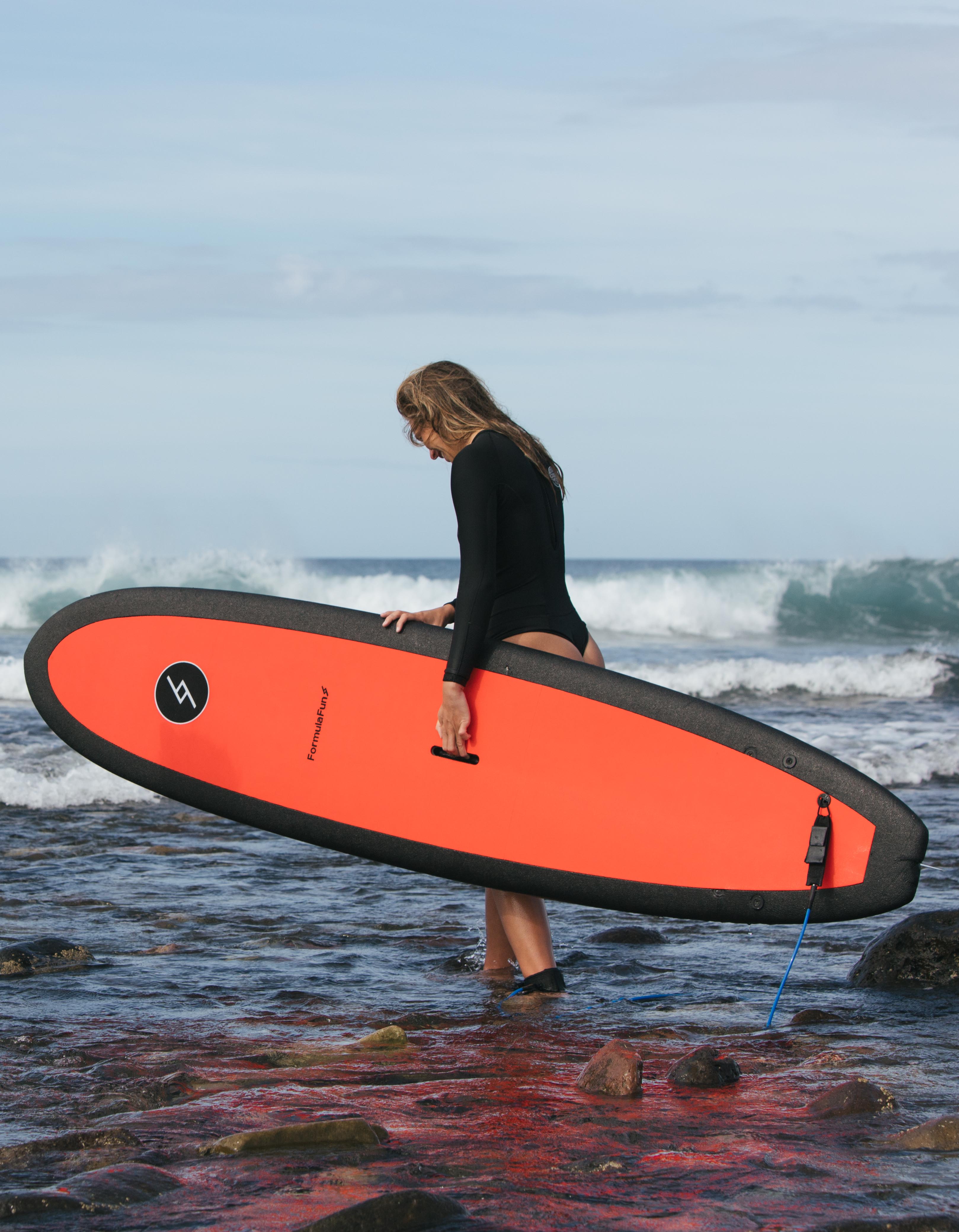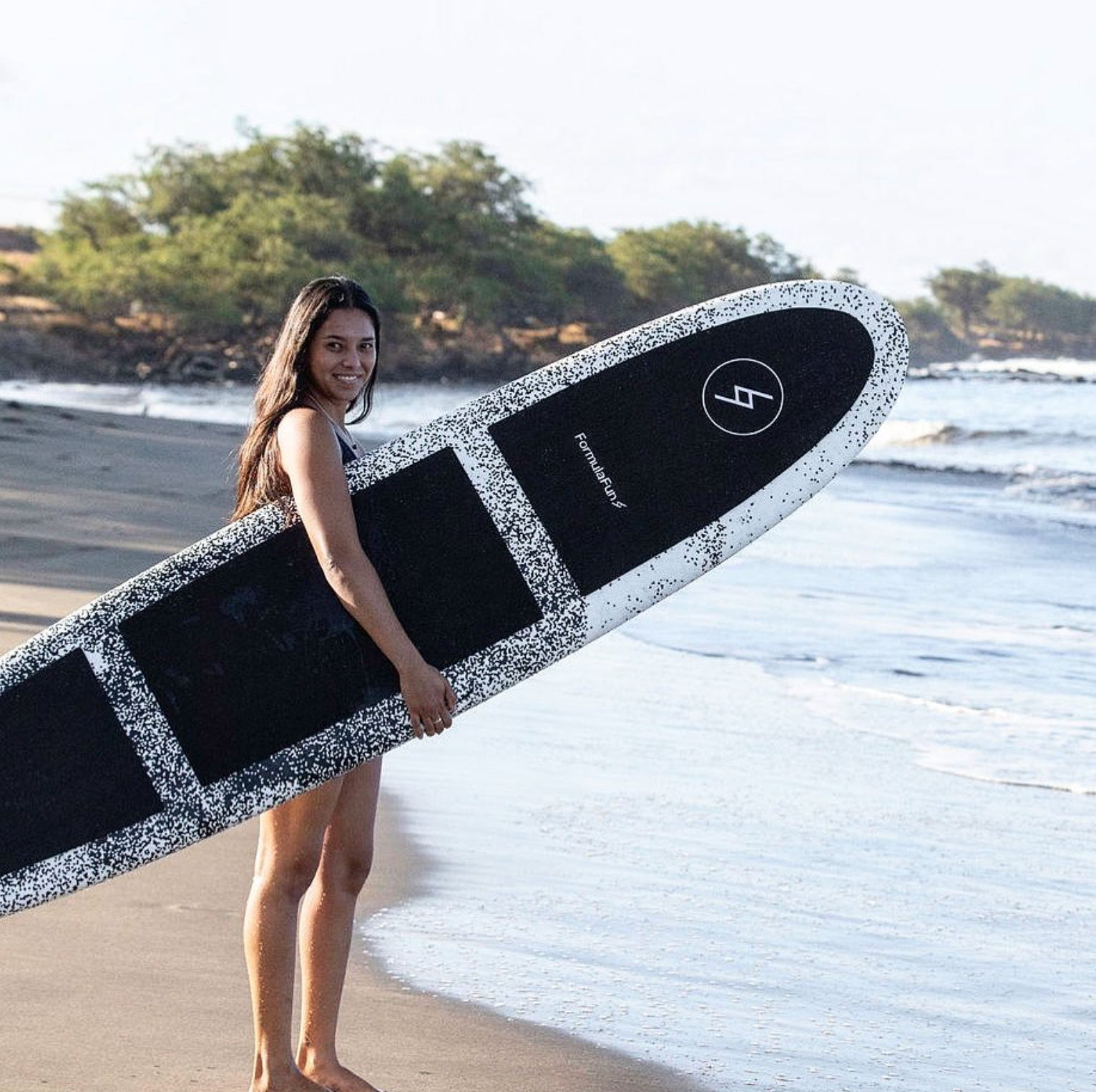Introduction
If you're new to surfing, it can take a while to get comfortable riding the waves. But once you do, there's no limit to how far your passion for surfing can take you. Here are some tips and tricks so that you can hit the waves like a pro in no time!
Picking the right board length
There are several factors to consider when choosing a board.
-
Shape: This is determined by two things: the width of a surfboard and its length. The wider it is, the slower it will be and easier to catch waves; boards with a lot of rocker (the curve) are more maneuverable. If this is your first time surfing, choose a wide board rather than a narrow one so that you can get used to riding on water.
-
Size/Length: This also determines how fast or slow your new board will be as well as how easily you can catch waves in different conditions. It's best if you can find someone who has used similar boards before so they can help decide which one works best for them based on their experience with other types of boards; this way there won't be any surprises.
-
Volume: This measures how much water the board will displace; it's basically a measurement of how much space inside your new surfboard there is. The more volume, the more buoyancy it has and the easier it will be to keep on top of waves. However, volume is not a catch-all when it comes to choosing a surfboard.
Ultimately, using these 3 main factors will help you find a surfboard that's right for you.
If you're just learning, consider something that is anywhere from 7'0" - 8'2" (not too short and not too long) Of course, we'd recommend our 8'0" Rincon or 7'10" DOHO.
Stance
Stance is one of the most important aspects of learning to surf. Your stance will determine how you balance your weight on the board, how you paddle and turn, and how quickly you catch waves.
There are two main stances: regular and goofy footed. Choosing which stance is right for you depends on whether you're right-footed or left-footed (if you're unsure which foot is dominant, try writing with both hands; if it feels more comfortable with one hand over the other, that's your dominant hand). Most people are either "regular" or "goofy." Regular footed surfers are those who stand with their left foot forward and right foot back. Goofy footed surfers stand with their right foot forward and left foot back.
How to catch a wave
You need to know how to read waves. Waves come in many different sizes and each size has its own personality. Waves can be from a few inches high, to several feet high, or even 30 feet high! A wave can also have a steep face (the front part of the wave) or it could be very mellow (flat).
Once you’re ready for your first catch, wait until you see a wave that looks good for surfing. Choose one with not too much water dumping over its steepest part (called “breaking”) and make sure there isn't any seaweed in it—you don't want to get tangled up in that stuff! When you think you've found an ideal wave, paddle as hard as you can toward it so that you are almost standing on your board. As soon as your board begins moving forward out of the surf zone (where water is breaking), jump onto it using both hands while kicking one leg up behind you while still standing on the other foot in the deep water zone just outside of where waves break onto shore; then balance yourself upright once on top of your surfboard by putting weight down evenly on both feet without leaning back too far forward or falling off backwards due to lack of balance caused by improper positioning during takeoff process."
Turning your surfboard
As you are learning to surf, it is important to be able to turn your board in all sorts of conditions. Turning your surfboard is just as important as catching waves!
Turning your surfboard in different conditions will allow you to take advantage of the best waves and make it easier for you to catch more waves.
There are many different ways that a surfer can turn their board in different surf conditions, but if you're just starting out and you're in the lineup waiting for a wave, the easiest way is to watch other surfers. Try to figure out which directions they are both taking waves and turning their boards so that you can practice the same thing.
Conclusion
Once you get comfortable in the water, there's no limit to where you can go. Now it’s time for you to put all this knowledge into practice. Of course, there are plenty of other things we could talk about, including different types of boards or techniques—but these require lots more practice than this quick intro! So instead, why don’t you take some time off and get out in the water!



